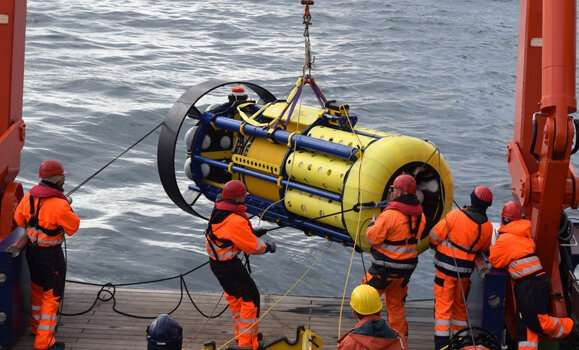Climate Change May Affect Deep Ocean Oxygen Levels More Than Previously Estimated: Study

KEY POINTS
- The Labrador Sea provides oxygen to oceans worldwide
- Researchers suggest: 10 times more oxygen is sent to deep-sea environment via the sea
- The research proves earlier estimates wrong
Climate change is affecting the deep ocean environment much more than earlier thought to be. Much more oxygen is transported to a “trap door” in the deep ocean via the Labrador Sea than earlier estimated, according to a new report.
Research at the Dalhousie University and Scripps Institution of Oceanography made the analysis from that data gathered by the robotic profiling system SeaCycler, which was anchored in the Labrador Sea for a year in 2016.
The robotic system works like a capsule inside the deep ocean and gathers chemical, biological and physical data.
The research was published under the title, “deep ocean oxygen levels may be more susceptible to climate change,” on the Dalhousie University website Monday.
The researchers measured the transfer of gases in the deep ocean-atmosphere as deep as two kilometers. They found that oxygen levels in the deep sea atmosphere were more than ten times what was earlier estimated. The difference occurred due to the air released by large bubbles, which were formed during violent winter storms. The fact that there is a larger oxygen supply in the atmosphere also reveals that the requirement of oxygen to sustain the environment is much more than earlier estimated.
The oxygen is caught inside the “trap door” which opens for a few months in winter and captures oxygen inside. It is created because oxygen-rich surface water becomes cold enough to mix with oxygen-deficient deep ocean waters.
These waters then flow out of the Labrador Sea and supply oxygen to the earth’s oceans, which is why researchers call the Labrador Sea the “lungs” of earth’s oceans.
Because of climate change and excess meltwater from the melting of Greenland Icecaps, much more freshwater is being released into oceans.
This actually causes the density of ocean water to become low and makes the oceans’ breathing shallower, the researchers claim.
The researchers are planning to send SeaCycler underwater again, this time armed with better sensors to gather further data.
© Copyright IBTimes 2025. All rights reserved.





















